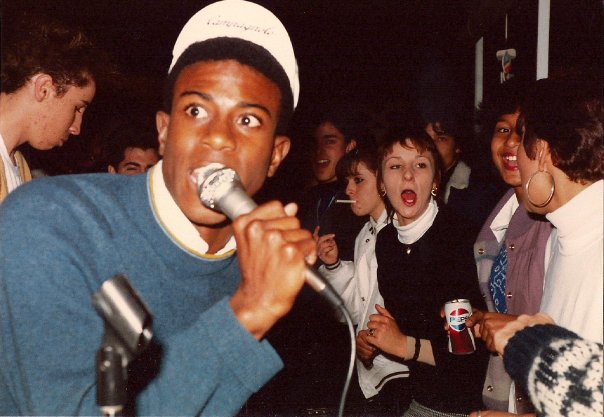One night in 1986—before current members Tom Dumont, Tony Kanal, and Adrian Young were in the band—No Doubt had finished playing a backyard gig to punks, mods, skinheads, and other degenerates in their hometown of Anaheim, Ca. Without warning, their friend was suddenly jumped by members of the notorious punk gang Los Angeles Death Squad, better known by locals as the L.A. LADS.
“They started to beat the living crap out of [him],” the band’s former trombone player, Kevin Wells, tells SPIN.
That’s when No Doubt co-founder and co-vocalist John Spence, who was about 5’8 with a thin build, sprang into action against the group of tough guys.
“John Spence literally grabbed [our friend], pulled him away from the LADS, pulled him into the house, closed the door, saved his ass and ran out the front door and got on his scooter and took off,” Wells says while chuckling at Spence’s courageous act that night.
Wells says he remembers this moment because Spence could have easily walked away and refused to help the friend who foolishly hit on one of the LADS’ girlfriends.
“But he was a guy who took care of people, he was a good guy, it exemplifies who he was … he definitely had balls,” Wells says.
Before Gwen Stefani and No Doubt became international superstars, she shared vocal, stage, and songwriting duties with Spence, a Black teenager from Anaheim who loved ska, punk, and the mod subculture.
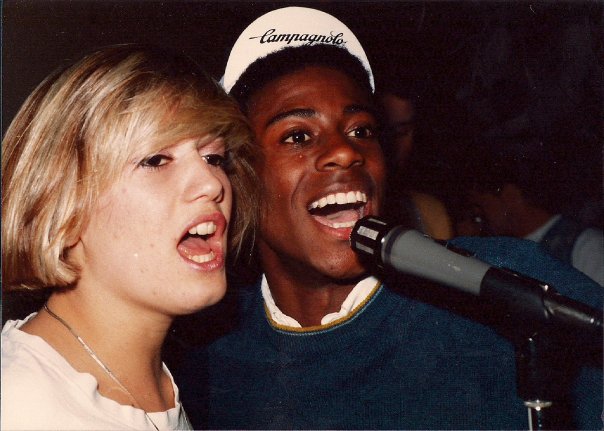
“We talked about Bad Brains a lot,” Spence’s friend Jim Saunders remembers. “He dressed kind of in that old school mod fashion, always nice shoes if it wasn’t Creepers.”
As a stylish frontman who emulated the look of U.K. bands like The Specials and The Selecter, Spence often sported Fred Perry clothing, penny loafers, and bomber jackets in his everyday wear. However, Spence was more than just fashion-savvy, he was also a creative leader who named the band after one of his favorite sayings.
“Everywhere John went, everything John said, it was always ‘no doubt, man,’ ‘no doubt,’ ‘no doubt,’” original trumpet player Gabriel “The Gun” Gonzalez tells SPIN. “He’s like, ‘Let’s just call the band No Doubt,’ and we’re like ‘Nah dude that’s stupid,’ but he was so convincing.”
Friends describe Spence as someone kind, friendly, quiet, and somewhat shy. But when Spence got on the mic, he became an agent of chaos, unrecognizable to even his bandmates.
“I’d look at John and be like ‘Wow,’ I could never see myself or anyone in the band doing what this guy did, he brought a whole different energy, he had no fear,” Gonzalez says.
During a 1987 show at Fender’s Ballroom in Long Beach, Ca, Wells says No Doubt was slotted to play second on a bill with about 10 other bands. The first band, who were cocky and mocked No Doubt’s name, tried to hype up the audience and get them to slam dance to no response.
“They were screaming at the audience trying to get them into them, but nobody would dance,” Wells says.
When Spence hit the stage with No Doubt, everything changed in a flash.
“He started doing back flips— and then boom, mosh pit, boom, people are dancing, boom,” Wells describes excitedly.
These on-stage antics were the norm for Spence, who always captivated crowds with explosive energy, back flips, and stage dives during their sets.
“John was a hype man, he was a phenomenal frontperson, he controlled the crowds,” Gonzalez says.
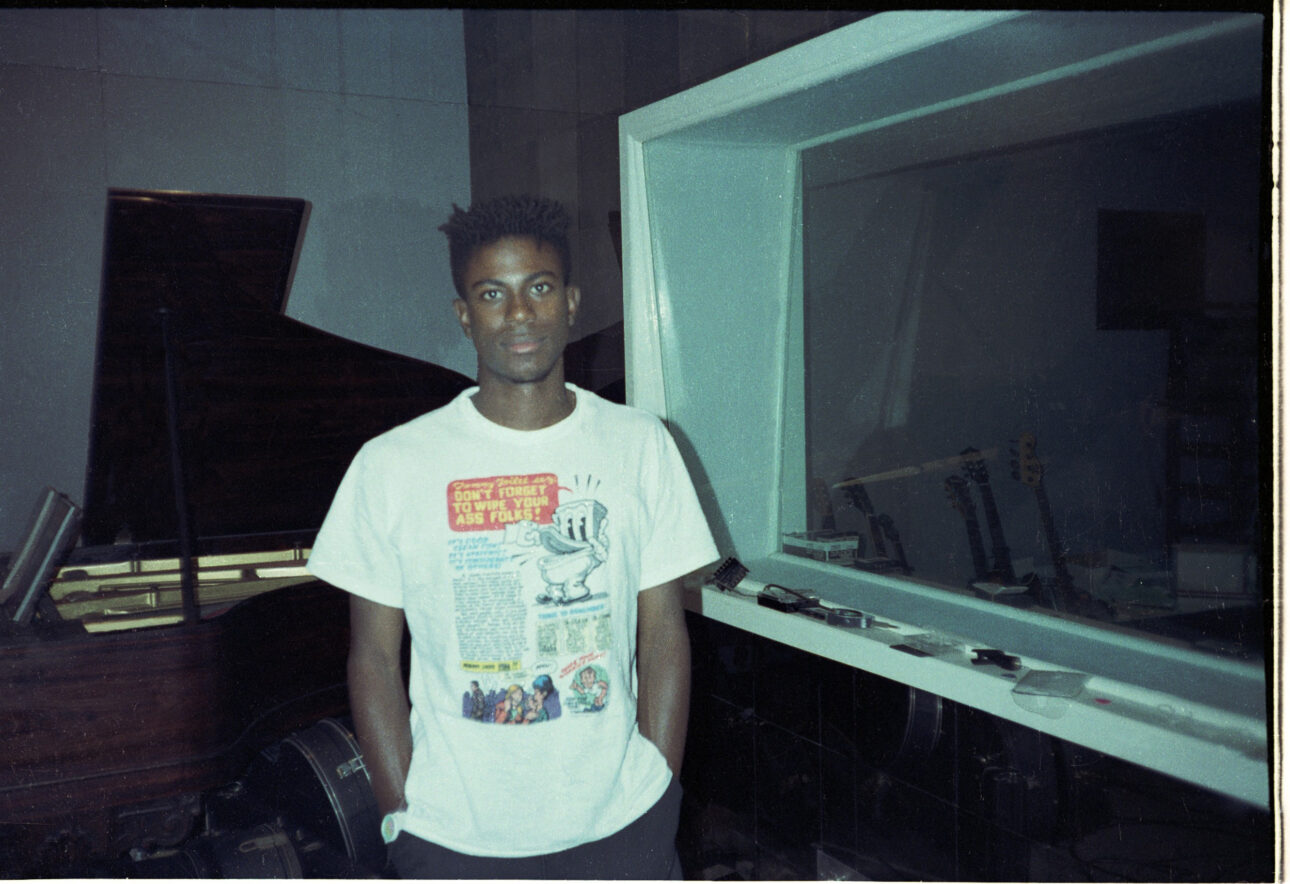
With so much enthusiasm being part of his personality, friends were shocked and devastated on Dec. 21, 1987, when Spence died by suicide at age 18. Kanal, who joined the band in 1987 and played with Spence, opened up about his death in SPIN’s 1996 cover story: “Kanal received a phone call from Eric Stefani: ‘He just said, ‘Come over right away.’ I got there and he said, ‘John’s dead.’ He shot himself in the head.”
Spence’s death had a profound impact on his friends, with many of them still having difficulty understanding and grappling with it.
“Whatever his struggles were, he kept them away from everyone really well,” author R. Dean Johnson, who was friends with Spence, tells SPIN.
Johnson wrote about his friendship with Spence in a short story called “Simple Math” for the literary journal Cimarron Review. In the story, Johnson processes Spence’s death by describing their time at Anaheim’s Katella High School, where Spence was a student before transferring to nearby Loara High School. This non-fiction narrative was the first Johnson wrote in his career about Spence after wrestling with the idea for years, thinking it was too personal. But after working on his short story, Johnson says he got a profound sign when he got in his car to go out.
“I turn on the radio and a No Doubt song was on,” he says. “I was like, ‘Oh, ‘Spiderwebs’ is on, that must mean that this is okay with John,’ it was a gift.”
Johnson wrote about a visit he and a friend made to Spence when he was hospitalized at a psychiatric ward during Spence’s sophomore year. Johnson says that at the time, Spence behaved like his usual self and didn’t reveal any details about his hospital stay. Johnson took Spence’s words at face value.
“John was just trying to reassure us that everything’s gonna be okay, and he didn’t seem different,” Johnson says. “When we were walking back, [my friend] was like, ‘Why is he in there?’ and I was like, ‘Didn’t you see the bandages on him? I think he tried to commit suicide,’ but that’s how shocking it was … even in the psych ward, he didn’t seem like he was struggling.”
According to Spence’s close friends, he rarely disclosed anything about his personal life, so few knew that Spence had mental health struggles. Friends also say Spence never talked to them about his family, though Stefani said in 1996 that compared to her family, the dynamic of Spence’s family was “different.”
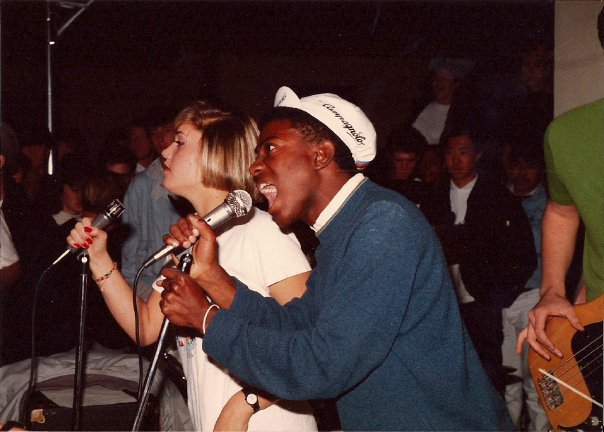
But friends like Johnson and Saunders, who were on the track team with Spence at Katella High School, knew some of Spence’s mental health issues.
“We knew he had tried [suicide] once before, and I don’t think any of the Loara people or any of his friends from that side knew it had happened before,” Saunders says.
Many of Spence’s closest friends were stunned when they learned that the energetic and positive frontman they knew died by suicide.
“It blew everyone away because you didn’t see problems, back then we weren’t thinking about things like that, nobody was talking about mental issues and depression,” Gonzalez says.
Before No Doubt played their next show a few days later at the Roxy in Los Angeles, Spence’s best friend Jason LaComb took the stage and informed the audience of the band’s intention to break up.
“All of us have dealt with this tragedy in our own way, but perhaps the hardest barrier to face is what No Doubt will do tonight,” LaComb said. “Let us all experience a tribute to John Spence, a truly good person. This is for you John, the last No Doubt performance.”
Eric Keyes, a friend and archivist of the band, attended the show and says that despite being headlined by The Untouchables, the mood was somber.
“The audience was full of family and friends and No Doubt fans,” Keyes said. “Everybody knew John, so even though there was a big Untouchables crowd there, it was all the same scene, and everybody was sad.”
Following the show, the band ultimately decided to continue in memory of their late bandmate.
“No Doubt decided to keep the band going because they knew that’s what John would have wanted them to do,” Keyes says.
The band recorded a two-tone demo song called “Dear John” which paid homage to their beloved frontman. The ode to Spence opens with a slow-paced melody and Stefani crooning, “My friend, you’re gone / Someday I hope we meet again.” The song reflects on Spence’s life before ending with Stefani woefully singing, “I’m missing you my friend / I hope we meet again.”
Spence’s influence on the band transcends that song. His bandmates attribute No Doubt’s early success to Spence’s creative direction and showmanship in the band. Back then, according to Wells, headlining ska bands like Fishbone, who No Doubt would open for, would catch their set just to watch Spence.
“He impacted a lot of people, I genuinely think No Doubt wouldn’t be here today if it wasn’t for his energy in the beginning, his energy got No Doubt out there,” Wells says.
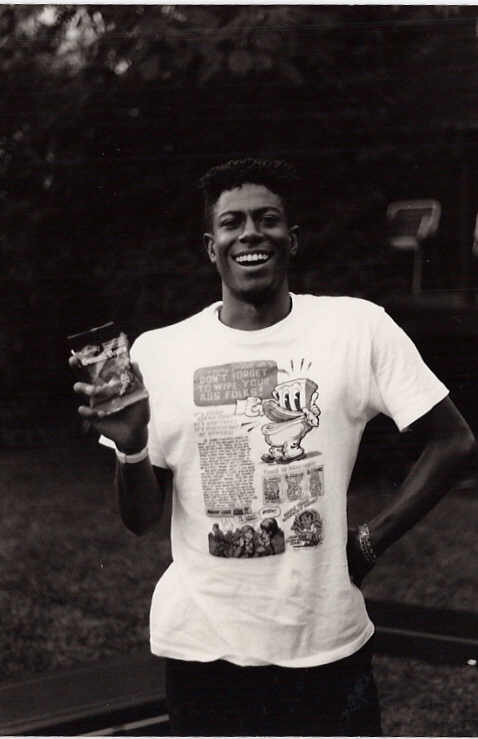
When Spence’s name comes up, his friends all say their most prevalent memories are of Spence projecting his vivacious spirit with a dazzling smile that was infectious. The word “joy” is repeatedly used when describing the legacy of the frontman who helped create one of the most influential pop bands of the past 30 years.
“When I think of John, I don’t think oh, gosh, poor tragic, John—I think of the joyful John and John getting out into the world,” Johnson says. “Within music, he was feeling the joy and maybe that was his escape, John’s escape [was to] dance with a band and jump off the stage and have people come up on the stage with him, and it doesn’t matter if you loved the music as much as he did, he was gonna go out there and just do it.”
It is also how Kanal remembers him. The bassist played with Spence for just a few months, but the time he spent with the No Doubt frontman left a profound mark on him.
“Silly string, sweat, scooter rallies, back flips, mosh pits, Fender’s Ballroom,” Kanal tells SPIN. “I only knew John for nine months of my life when I was 16 years old, but I have wonderful, indelible memories of those formative years. I am forever grateful that I got to share the stage with him for a brief period of time. John was a kinetic ball of incessant energy who pushed us all to up our stage game. He was part Specials, part Fishbone, part Bad Brains. He embodied everything that we loved. Even now, 36 years after his passing, John remains a beautiful enigma who has had a resounding influence on our legacy and live performances.”

